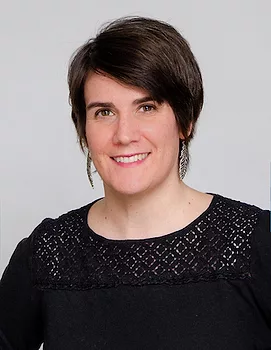Workforce development is a challenge that all businesses face these days, and it seems that it is hitting farm equipment dealers and manufacturers particularly hard. It’s a cause I’m passionate about, and while working on this issue’s special report, that passion deepened.
I knew what the challenges were — low unemployment, kids being pushed to get 4-year degrees, negative attitudes about doing “dirty” work, skills gaps and even low birth rates. I was aware of a lot of the work being done to help dealers get more young people interested in working for them, but I learned about so many more and discovered that these programs are doing a lot more than filling technician openings. In this report, we cover a variety of different approaches dealers across the U.S. and Canada have taken to fill much-needed positions and efforts different industry groups are making to help the dealers out.
I had the pleasure of talking with Sharyl Allen, superintendent of Conrad Public Schools in Montana who is working with the Montana Equipment Dealers Assn. (MEDA) on a service technician intern program. The program itself is impressive, but almost more impressive is how quickly Allen and the association got the program off the ground.
In November 2018 Daniel Jones, president of MEDA and aftermarket manager for Frontier Ag, reached out to Allen about working with the schools. By January, the school district had launched is Trades Academy — starting with a program for ag service technicians. Three students are currently enrolled and two more are preparing to join the program. What really struck me about my conversation with Allen was how much this program has impacted these kids’ lives in just 4 months. The students that are in the program were what Allen calls “drifters.” They are the type of students who don’t want to go to college — and inherit the large debt that comes with it — but don’t really know what they want to do and end up drifting from one low-paying job to another and get stuck.
Of the three students in the program currently, one of them lives with a single dad and recently lost his brother to suicide. The other has a single mom who is terminally ill. These aren’t kids who are breezing through life. One of the kids recently told Allen that enrolling in this program is the best thing that has ever happened to him in his life. According to Allen, Montana has one of the highest suicide rates among high school aged kids. These kids need a bright future to work toward, and this program is helping provide that.
Jones recently shared this story with Allen. The students arrive at the shop to work at 1 p.m. and usually leave at 4 p.m. One day, he saw that one of the students was still there working after 4 p.m. He let the student know he didn’t have to stay; he could go home. The student told him that he wanted to stay until the job was done. The job wasn’t finished until after 6 p.m. Allen says that before this program started, that would not have been the case. Not only are they learning the technical skills needed to join the workforce, students are picking up the work ethics to keep them employed.
The program is designed so that when the students enrolled in it graduate from high school, they are certified technicians and ready to enter the workforce — no college necessary. Both graduates and the dealerships they are working with are set up for success.
Workforce development is an industry-wide problem that needs an industry-wide effort to solve it. It will be addressed at the Equipment Dealers Foundation’s Workforce Development Summit, which I’ll be attending on Oct. 16 in Louisville, Ky., in conjunction with the GIE+Expo. I hope to see you there, so we can all be part of the solution.
Related Content:
- To the Point: Filling the Workforce Pipeline
- Help Wanted: Developing the Farm Equipment Workforce
- AEM and EDA Team Up to Support CASE Scholarship Program
- New Holland’s Bret Lieberman & Consultant Bob Clements Discuss Challenges Facing Equipment Dealers







